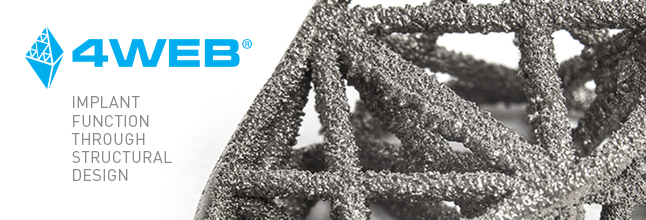
This week, 4WEB Medical has announced its first success story in Australia with a patient-specific segmental bone defect procedure completed in Brisbane, supported by LifeHealthcare, the company’s Australian partner.
“We are very excited about 4WEB’s first Australian patient specific implant procedure,” said the company’s President and CEO, Jessee Hunt. “While this is our first custom implant procedure completed in Australia, 4WEB has completed nearly 100 custom truss implant procedures performed worldwide dating back to 2011. 4WEB has produced patient specific implants in a variety of orthopedic procedures such as spinal fusions, hemi-pelvectomies, distal tibial osteotomies, humeral and femoral segmental bone defects, ankle revisions, sternectomies as well as many others.”
4WEB Medical uses the concept of structural engineering, such as the truss design in this bridge, for the development of patient-specific structural implants
Comparable to the truss structure of bridges, which have been trusted to support traffic for centuries, 4WEB Medical’s orthopedic implants provide for high-tech solutions to neurosurgeons as well as orthopedic, and foot and ankle surgeons. Patient-specific implants are becoming more prevalent in the medical field, which is coming to realize that made-to-order devices will serve individual patients far better than yesterday’s off-the-shelf, one-size-fits-some models. The use of 3D printing to create the implants allows for a single unit to be created at a significantly lower cost and with no waste.
“The ability to customize the truss implant to match the unique anatomy of an individual patient is a significant advancement in orthopedics,” notes LifeHealthcare COO Matt Muscio. “Current porous metal technologies rely on bone attachment which has shown some drawbacks over time. The open architecture truss implant technology provides a robust scaffolding for structural support while allowing for osseous incorporation.”
CT scan data from the patient is used in 3D software reconstruction in order to ensure the precision needed to custom-fit an individual. With this 3D model, the surgeon is able to anticipate the best plan for the operation, and then to convey that intent to 4WEB Medical’s engineers who, in turn, design a custom truss implant. The implant is designed to exactly fit the void left by the resection, supporting bone growth in the patient as healing occurs. Once the surgeons approve the design, the implant is 3D printed and then is ready for the OR.
Do you know anyone who has benefited from a 3D printed implant? What do you think of 4WEB’s Australian operation? Join the discussion in the 4WEB Medical First Australian Implant forum thread over at 3DPB.com.
